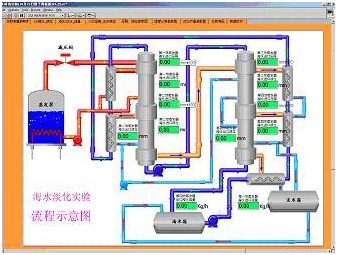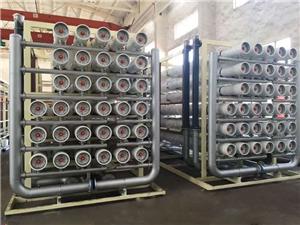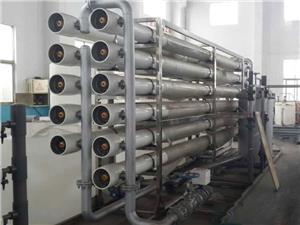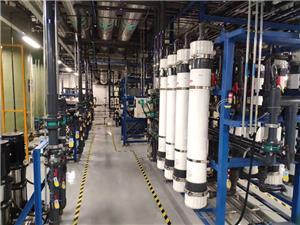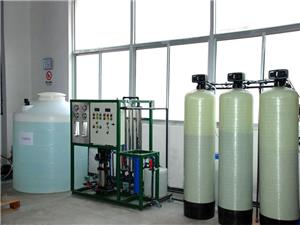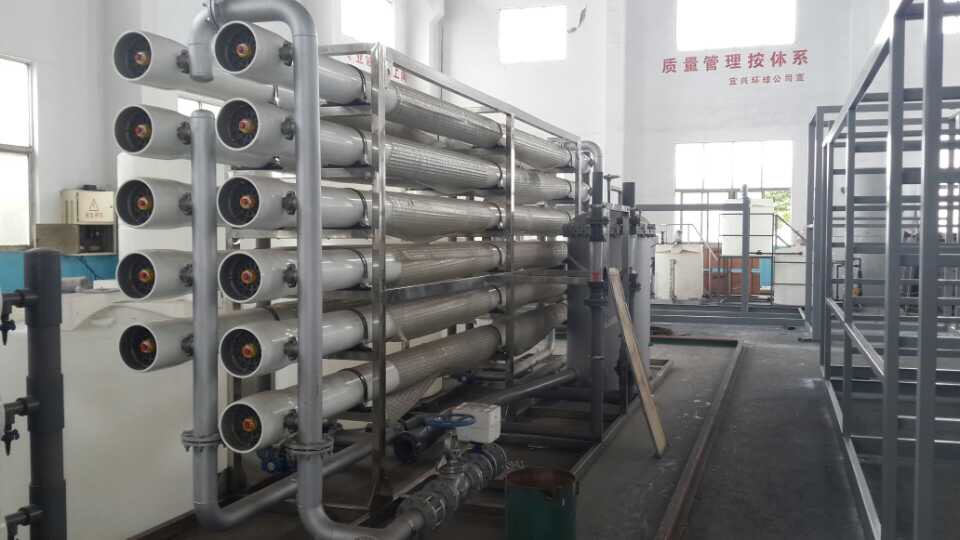Seawater Desalination
Seawater desalination is to use seawater desalination to produce fresh water. [1] It is an open source incremental technology to realize the utilization of water resources. It can increase the total amount of fresh water, and is not affected by time, space and climate. It can ensure the stable water supply of coastal residents' drinking water and industrial boiler make-up water.
The process of obtaining fresh water from seawater is called seawater desalination. The seawater desalination methods used include seawater freezing method, electrodialysis method, distillation method, reverse osmosis method and ammonium carbonate ion exchange method. The application of reverse osmosis membrane method and distillation method is the mainstream in the market. More than 100 scientific research institutions in more than 10 countries in the world are conducting research on seawater desalination, and hundreds of seawater desalination facilities with different structures and capacities are working. A modern large-scale desalination plant can produce thousands, tens of thousands or even nearly one million tons of fresh water every day. The cost of water is constantly decreasing. In some countries, it has been reduced to almost the price of tap water. The desalination water in some areas has reached the scale of national and urban water supply.
Main purpose
Seawater desalination is to use seawater desalination to produce fresh water. [3] It is an open source incremental technology to realize the utilization of water resources. It can increase the total amount of fresh water without being affected by time, space and climate. The water quality is good and the price is becoming more and more reasonable. It can ensure the stable water supply of coastal residents' drinking water and industrial boiler make-up water. The process of obtaining fresh water from seawater is called seawater desalination. [4]
Seawater desalination is mainly to provide drinking water and agricultural water. Sometimes edible salt is produced as a by-product. Desalination is popular in the Middle East and is also used on some islands and ships.
The cumulative desalination capacity of China's built and upcoming projects is about 600000 tons / day. From the perspective of policy planning, there is more than five times the growth space of the industry market capacity in the next decade, and the prospect is optimistic. The cost of seawater desalination has been reduced to 4-5 yuan / ton, and the economic feasibility has been greatly improved. Considering the cost reduction brought by future technological progress and policy support, the seawater desalination industry is expected to grow explosively in the future.
Historical evolution
Seawater desalination
Sea water desalination has been a dream pursued by mankind for hundreds of years. In ancient times, there were stories and legends about removing salt from seawater. The large-scale application of seawater desalination technology began in the arid Middle East, but it is not limited to this region. Since more than 70% of the world's population live within 120 kilometers from the sea, seawater desalination technology has been rapidly applied in many countries and regions outside the Middle East for more than 20 years. The latest information shows that.
As early as 400 years ago, the British royal family offered a reward for economic desalination methods.
But it was not until the 16th century that people began to make efforts to extract fresh water from seawater. At that time, European explorers used the ship's stove to boil seawater to make fresh water during their long voyage. Heating seawater to produce steam, cooling and condensation can get pure water, which is the experience of daily life and the beginning of seawater desalination technology.
Desalination in the modern sense was developed only after the Second World War. After the war, due to the vigorous development of oil in the Middle East by international capital, the economy and population of this region developed rapidly, and the demand for fresh water resources in this originally arid region increased day by day. The unique geographical location and climate conditions in the Middle East, coupled with its rich energy resources, make seawater desalination a realistic choice to solve the shortage of fresh water resources in the region, and put forward the requirements for large-scale seawater desalination devices.
Since the 1950s, seawater desalination technology has accelerated with the intensification of water resources crisis. Among the more than 20 desalination technologies developed, distillation, electrodialysis and reverse osmosis have reached the level of industrial large-scale production, [5] and are widely used all over the world.
As early as 1958, researcher Shi song first carried out the research on ion exchange membrane electrodialysis seawater desalination in China. Earlier, in 1953, C.E. Reid suggested that the U.S. Department of the interior include reverse osmosis research in the national plan.
In the early 1960s, multi-stage flash desalination technology came into being, and the modern desalination industry has entered an era of rapid development.
Subsequently, in 1967, the State Science and Technology Commission organized a national battle for seawater desalination, and organized a national elite battle for seawater desalination in various disciplines such as water treatment and analytical chemistry, material chemistry and fluid mechanics.
Seawater desalination
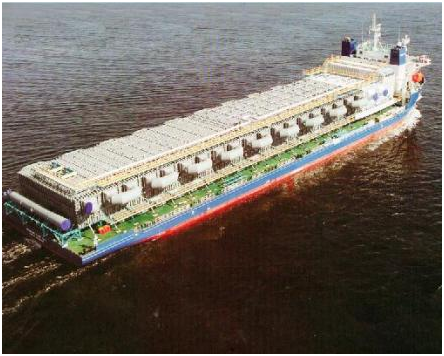
In 1970, the main force of the battle gathered in Hangzhou, Zhejiang Province, and organized the country's first seawater desalination laboratory. During this period, they have been using electrodialysis technology for seawater desalination, successfully developed a special microporous filter membrane for marine monitoring, and built the world's largest electrodialysis seawater desalination Station - Xisha Yongxing Island seawater desalination station. Once a world leader in seawater desalination.
In 1982, the Chinese Society for desalination and water reuse was established in Hangzhou with the approval of the Department of the Chinese Association for science and technology. However, after ten years of catastrophe, it still weakened. At this time, the all aromatic polyamide composite membrane and its roll components in the United States far across the ocean have been prominently published.
In 1984, the State Oceanic Administration established the Hangzhou water treatment technology research and development center of the State Oceanic Administration with the seawater desalination research office as the main body. China began to pay attention to membrane technology. However, the composite membrane and its coiled components for seawater desalination in the United States have been commercialized in a large area and put into national and civil use.
In 1992, in order to catch up with the gap between membrane technology and the world, Junding of the State Science and Technology Commission established the national liquid separation membrane engineering technology research center based on the Hangzhou water treatment technology research and development center of the State Oceanic Administration, and began to quietly develop domestic reverse osmosis membranes.
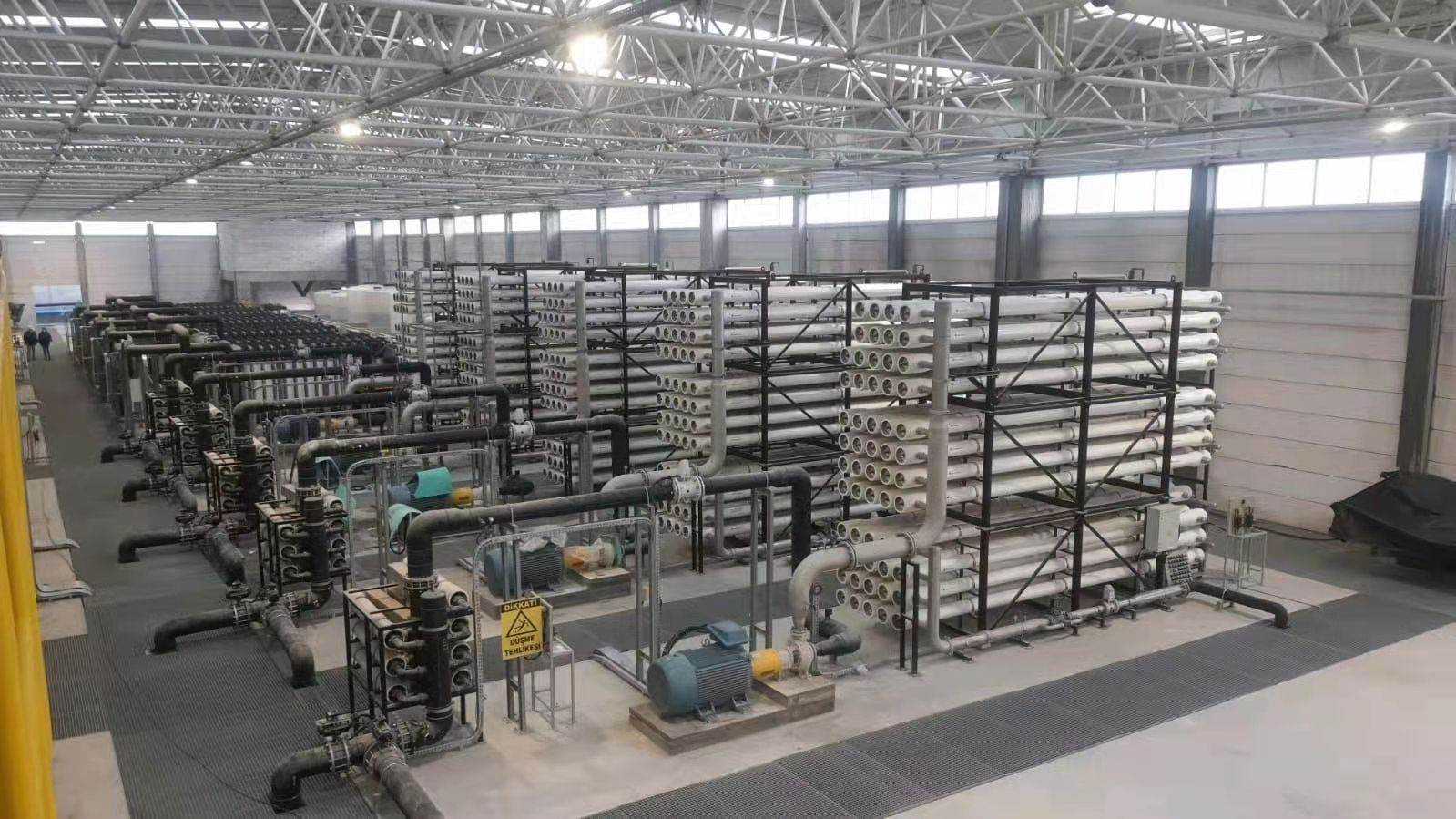
By 2003, seawater and brackish water desalination plants have been built and contracted in the world, with a production capacity of 36 million tons of fresh water per day. Seawater desalination has spread to 125 countries and regions all over the world, and desalinated water feeds about 5% of the world's population. In fact, seawater desalination has become a widely used strategic choice to solve the problem of water shortage in many countries in the world. Its effectiveness and reliability have been widely recognized.
Before the 21st century, reverse osmosis membrane technology was monopolized by foreign countries, while China did not begin to master the production technology of reverse osmosis membrane until the late 1990s. This history can be traced back to the early days of the founding of the people's Republic of China, when our national leaders had realized the prospect of seawater desalination and its role in society in the future.
Reverse Osmosis
It is a membrane separation and desalination method, which was used only in 1953. This method uses a semi permeable membrane that only allows the penetration of solvent and does not allow the penetration of solute to separate seawater from fresh water. Under normal circumstances, fresh water diffuses to the seawater side through the semi permeable membrane, so that the liquid level on the seawater side gradually rises and does not stop until a certain height. This process is infiltration. At this time, the static pressure of the water column above the sea side is called osmotic pressure.
If an external pressure greater than the osmotic pressure of seawater is applied to one side of seawater, the pure water in seawater will reverse osmosis into fresh water. The biggest advantage of reverse osmosis is energy saving. Its energy consumption is only 1 / 2 of that of electrodialysis and 1 / 40 of that of distillation. Therefore, since 1974, developed countries such as the United States and Japan have successively shifted their development focus to reverse osmosis.
Reverse osmosis seawater desalination technology has developed rapidly, and the project cost and operation cost have been continuously reduced. The main development trend is to reduce the operating pressure of reverse osmosis membrane, improve the recovery rate of reverse osmosis system, cheap and efficient pretreatment technology, and enhance the anti pollution ability of the system.
